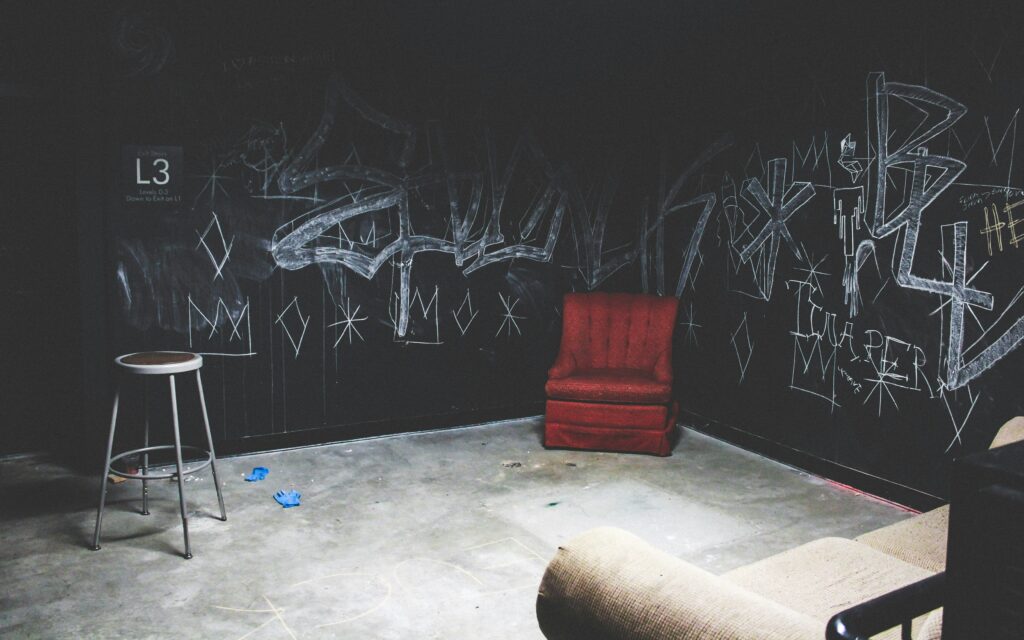Why Paint Is the Ultimate Room Reset
Paint doesn’t need a demo crew or a massive budget to work its magic. One weekend, a brush, and a gallon of well-chosen color—and suddenly the entire vibe of a space shifts. It’s the fastest and most transformative tool in the toolbox when you’re craving change without the chaos of renovation.
Compared to knocking down walls or swapping out furniture, paint costs next to nothing. But the payoff? Big. You can add light, mood, warmth, or edge—all with a few strategic strokes. It’s a small effort with an outsized result.
What makes paint even better? Its range. We’re not just talking walls. Furniture, ceilings, doors, even floors—paint lets you tweak, test, and transform just about any surface. If you’re tired of the same old look but not ready for a full overhaul, this is your move.
Accent Walls That Work Hard
Accent walls aren’t just for show—they set tone and direction. The key is choosing the right wall. Go for the one your eye hits first when you walk in. In bedrooms, that’s usually behind the bed. In living rooms, it might be the fireplace wall or the space behind your main sofa. Avoid walls with too many doors or windows—it cuts up the visual punch you’re aiming for.
Color-wise, bold tones make a statement, no question. Deep navy, forest green, or even burnt orange can elevate a space fast. But subtle contrasts work too. A couple of shades darker than the other walls keeps things sleek without trying too hard. If your room’s already busy with patterns or art, softer shifts are the way to go.
Now for symmetry: measure twice, tape once. Painter’s tape is your best friend here—use a level to apply it straight, especially on textured walls. Want crisp lines? Press down hard along the edge and remove it while the paint’s still slightly wet. Precision’s not flashy, but it’s what makes your wall look pro—not like a weekend experiment gone rogue.
The Magic of Two-Tone Walls
Two-tone walls aren’t just trendy—they’re one of the easiest ways to shift a room’s visual proportions without knocking down a thing. Whether you go horizontal or vertical depends on what you’re trying to achieve. A horizontal split (darker color on the bottom, lighter up top) grounds the room and makes it feel wider. Vertical division, on the other hand, leads the eye upward—great for low ceilings that need a stretch.
Placement matters. For balance, aim to divide the wall at around chair-rail height (roughly one-third from the floor), or use architectural features as natural breaking points. Eyeballing it won’t cut it—use painter’s tape and a level to get it right.
When it comes to color, contrast is your friend but don’t go neon-on-neon. Pair neutral bases—like soft gray or muted beige—with deeper tones like forest green, navy, or terracotta. It keeps the look grounded and lets the color do the talking without shouting over the rest of the room. Two tones, one purpose: making your space feel intentional and considered.
Painted Ceilings (Yes, Really)
Most people ignore the ceiling—the so-called “fifth wall”—which makes it a blank canvas with serious potential. Painting the ceiling can instantly shift the vibe of a room without touching the furniture or layout. It’s the fastest way to bring in character where you least expect it.
Go light if your room feels cramped or shadowy. Soft whites, pale blues, and buttery creams can bounce light around and visually lift the ceiling, making the space feel bigger and airier. It’s subtle but effective, especially in smaller rooms.
If you’re after something bold, go the opposite direction. Deep navy, charcoal, or even matte black on the ceiling adds drama and coziness. It works especially well in dining rooms, bedrooms, or any space meant to feel snug. The key is to balance it with lighter walls so the room doesn’t close in completely.
Painting your ceiling isn’t about following rules—it’s about setting a tone. Don’t sleep on this extra surface. Use it.
Furniture Facelifts
Giving furniture a second life is one of the easiest ways to refresh a room—and you don’t need fancy tools or a workshop to do it. First things first: primer matters, especially if you’re painting old wood or slick surfaces like laminates. A bonding primer creates the right grip and prevents chipping down the line. Skipping this step usually means you’ll be repainting sooner than you’d like.
Now, about paint. Chalk paint is great for a matte, vintage look. It requires minimal prep, dries fast, and gives that soft, textured finish folks love for modern farmhouse or shabby chic styles. Latex paint, on the other hand, gives a smoother, more durable coat—ideal for high-touch pieces like dressers or kids’ chairs. It needs more prep but holds up better over time.
Spraying your finish coat gives you a super-smooth, professional result—especially on larger pieces. But setup, cleanup, and overspray can be a hassle. Brushing works just fine for smaller or more detailed items and lets you control where the paint goes. The key: invest in a good-quality synthetic brush and steady your hand.
Furniture doesn’t need to match—it just needs to make sense in the room. A smart paint job can tie a piece in with the rest of your decor while making it feel brand new.
Painted Patterns Without the Wallpaper Hassle
Wallpaper can be high-commitment—not to mention pricey and time-consuming. Painted patterns, on the other hand, offer a flexible, budget-friendly alternative with just as much visual interest.
Pattern Ideas That Pop
Painted designs can bring eye-catching detail into your space without overwhelming it. Consider styles that range from subtle to bold:
– Stripes: Classic and versatile. Try vertical for height or horizontal for width.
– Chevron: A dynamic pattern that adds movement to any wall.
– Stencils: From florals to geometric shapes, these provide high impact with minimal effort.
Clean Lines Start With Smart Prep
To avoid smudges and uneven edges, surface prep is key. Take the time up front—it’ll show in the results.
– Patch and sand any imperfections to create a smooth painting surface.
– Use painter’s tape rated for crisp lines and apply it firmly to prevent bleeding.
– Measure twice, chalk once—drawing guide lines before taping ensures symmetry and balance.
Modern Over Messy
Keeping your patterns up-to-date means you’ll want to skip overly intricate or dated motifs. Instead, think minimalist shapes, limited color palettes, and breathing room between elements.
– Stick to two or three colors to avoid visual clutter.
– Leave negative space for a modern, airy look.
– Test your design on a cardboard swatch or small section before tackling the full wall.
Painted patterns offer total control without permanent commitment—ideal for renters, weekend DIYers, and design experimenters alike.
Upgrading Details: Doors, Trim, and Moldings
Small shifts can have big design payoffs, and trim is a prime example. Instead of disappearing into white walls, contrasting trim pulls focus and outlines a space. Think matte black against soft gray or warm beige paired with crisp white. It frames the room without distracting from it, bringing structure and balance to even the most casual setups.
Interior doors are getting more attention now, too—and for good reason. Painted in bold hues like deep green or navy, they work like rotating artwork. Simple paneling gets elevated. A hallway with matching painted doors instantly feels curated instead of forgotten.
Got leftover paint from your walls? Use it smartly. Touch up shelf backs, inside closet doors, or even a tired vent cover. These extras don’t scream, but they whisper clever. And they tie the space together without buying more supplies.
Refreshing a room isn’t always about a total overhaul. Sometimes, it’s chasing the details most people overlook.
Coordinating With Existing Decor
You don’t need a full redesign to make paint work. But you do need to pay attention to undertones. If your flooring or furniture leans warm (think honey oak, brown leather, gold accents), stick with shades that echo that—muted terracottas, creams, warm grays. Cooler undertones like ash wood, blue fabrics, or black iron pair better with crisp whites, icy blues, or cooler greige tones.
Never commit straight from the swatch. A color that looks perfect in the store can shift wildly once it’s on your wall and catching your room’s specific light. Test small patches in multiple spots, and check them morning to night. Make sure your paint plays nice with surrounding materials.
And don’t forget the big picture—rooms should flow. You don’t want every space to look the same, but there should be a thread of continuity. Keep a core palette and shift shades gently as you move from one room to the next. That way, the whole space feels considered—without feeling flat.
Paint Projects = Outdoor Impact, Too
Refreshing your space doesn’t have to stop at the front door. Many of the same paint techniques that transform interiors can also bring new life to your outdoor areas—whether you’re working with a balcony, porch, or full backyard.
Outdoor Surfaces That Deserve a Paint Refresh
– Front doors: A bold, welcoming color can instantly improve curb appeal
– Decks and patios: Try a stain or weather-resistant paint for a clean, updated finish
– Fences and railings: Don’t overlook these small details—they can frame your space beautifully
– Outdoor furniture: A quick spray or brush-on color update can extend the life of worn pieces
Things to Keep in Mind for Exterior Paint Projects
– Use outdoor-specific paints designed to withstand weather and UV exposure
– Clean and prep thoroughly before painting—dust, grime, and old finish can impact adherence
– Choose colors that align with your indoor palette to create visual flow across your property
Want More Outdoor DIY Inspiration?
For more practical ideas to upgrade your exterior on a budget, check out this full guide: Budget-Friendly Outdoor DIY Upgrades.
A paint job outdoors can be just as satisfying (and transformative) as what you do inside. Don’t underestimate its power to elevate your space—all year long.
Final Notes: Prep, Patience, and Paint Smarts
Don’t wing it. A beautiful finish starts with the boring stuff—sanding uneven spots, priming properly, and taping off like you mean it. It’s tedious, but skipping it guarantees regret later. This isn’t just about looks; it’s about longevity. Paint done badly peels, chips, and shows every shortcut.
Also, use decent tools. A throwaway brush might save you five bucks, but it’ll cost you twice that in frustration and cleanup. Splurge—just a little—on a solid roller and a brush that won’t shed into your finish.
Pace yourself. Don’t try to revamp the whole room in one sitting unless you’re into back pain and bad edges. Focus on one wall at a time, maybe one weekend at a time. You’ll avoid burnout and get cleaner results.
Paint is still the most affordable way to give a room that before-and-after magic. You don’t need a sledgehammer—just a plan and a brush.




